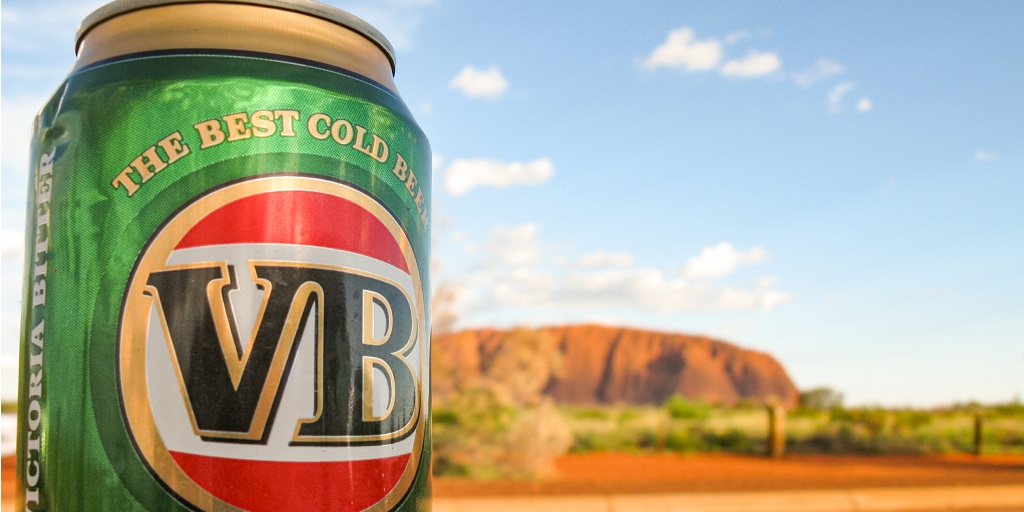
Aussie identity fuels resurgence in heritage beer

Heritage brands contribute a core part of Australian cultural identity making the renaissance of Fosters, VB and other heritage beer brands no surprise, according to a marketing expert.
One major brewer in particular, Asahi-owned Carlton & United Breweries, has been reassessing historic brands.
Last week it announced it would be reinvesting in Foster’s, bringing volumes, which had been floundering at 500,000 litres annually, up to 2.5 million litres a year.
But the major brewer has also put marketing spend behind ailing brands such as Melbourne Bitter, Reschs, and even VB, which has enjoyed tie-ups with shoe brand Volley and novelty marketing with its Thirst perfume and VB Tea.
Associate Professor at Macquarie Business School Dr Jana Bowden, a specialist in marketing and consumer psychology, said that revisiting these brands was a smart move on multiple levels.
“Heritage brands form an iconic part of Australian beer history because of their lifespan in the market, and in their role as a core part of Australian cultural identity,” she said.
“They’re Aussie emblems not only to Aussies but also to other international markets, especially the UK in the case of Foster’s. From a market perspective they also represent the life-blood of sales/volume.”
The use of brands which have ‘ready-made’ marketing and branding collateral not only cuts startup costs but taps into the existing customer feelings towards the brand in a form of nostalgia marketing.
Existing associations with brands can resonate with customers, from Paul Hogan’s dulcet tones to the retro trendiness of VB which has been applied to clothing brands.
“Heritage brands for all their classic uniqueness and richness in history have the ability to hold existing segments and attract new segments,” explained Bowden.
“They have a residual reputation. They are omnipresent – you see them in obvious places – pubs, clubs, bottle shops, but you also see the branding live on in private collections, museums, even art. There’s a lot of value in their brand equity.
“CUB has a history of drawing on consumer’s collective nostalgia and bringing its labels back into active duty either full time or sometimes as a periodic release.
“Foster’s itself has a long history as a big commercial brand and obviously they feel they can bring the brand back in and leverage more volume out of the mainstay commercial category.”
Moving on from craft?
As macro-beer declines and the craft sector grows, it made sense for the major brewers to acquire smaller breweries to develop their portfolio diversity.
This led to the acquisitions of strong brands such as Balter, Green Beacon, Mountain Goat, 4 Pines and Pirate Life, amongst others.
But this strategy cannot continue indefinitely, Bowden said.
“A brand portfolio has to be balanced out. It can’t just be about the latest trends – the newcomers on the block.
“A strategy like that would risk alienating the broader market.”
While craft beer continues to grow, the major brewers still command approximately 80 per cent of the Australian beer market. To focus solely on smaller craft brands then is to estrange the traditional drinkers of macro beer.
“Sure CUB might invest in craft, but that’s to build out the brand portfolio around the edges and to cater to changing consumer tastes.
“Craft, after all, is hovering [at a smaller] share mark and there’s 5-600 of them. It’s a fragmented market, and you have to draw the line somewhere on your investment in new trends.”
Attracting new audiences
Allocating spend to existing brands is shrewd, in that not only is everything in place to hit the ground running with advertising, but bringing back these brands can attract new audiences too.
“There’s been a resurgence in the youth market around nostalgic Australiana lately,” Bowden said.
“The apparel tie-ups look like an attempt to target the younger drinker.
“These partnerships also enable the labels to leverage off the ‘coolness’ that’s associated with the apparel brands and often their own cult following, like Volleys. It’s a clever co-branding strategy.
“For the consumer, it’s a ride back in time peering through rose coloured glasses to an era in life which seemed simpler.
“At the end of the day, it’s not just about the individual beer itself, it is about the depth of history and the emotional attachment to brand legacy.”
But the success of these revitalised brands is not guaranteed.
“It’s a bit trial and error and it is hard to make the call on whether the strategy will succeed …but for them to have made the move, it is likely that there is positive sentiment around the brand and enough of an emotional brand connection to give the brand a good go again in the Australian market.”
Bowden explained that Australian brands were becoming sought-after commodities in a post-COVID-19 world.
“COVID has really got consumers focusing on their home soil and buying local,” she said.
“It has solidified Australian identity simply by virtue of being “in it together.”
This taps into existing trends as beer drinkers tend to be provincial in their beer-drinking tendencies anyway, she explained.
“Drinkers are fiercely territorial when it comes to the labels they drink. They form deep identity loyalty bonds with the beers they drink and those labels become embedded as a part of who and what they are and what they represent.
“With what we have been through with COVID this year the timing couldn’t be better. Consumers are looking for escapism and this nostalgic marketing ticks all the right boxes.”



